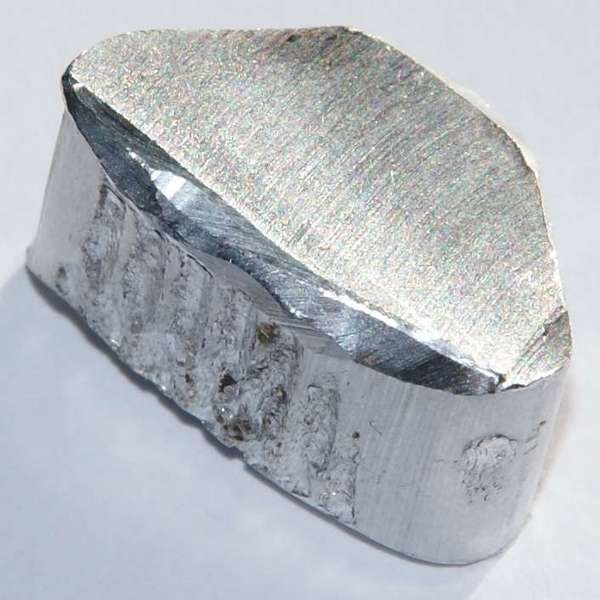Aluminum in Tea and Its Health Effects
Last Updated: Oct. 19, 2016Aluminum is a chemical element, a metal, that is abundant on earth and widely used in modern society. Aluminum plays no essential role in biology, but because it so abundant, it tends to be well tolerated by most plants and animals. Although it is not acutely toxic, there are health concerns associated with high chronic aluminum intake.
The tea plant has a tendency to concentrate aluminum, and tea has higher levels of the element than are typical in most food and drink. This has led people to raise concerns about negative health impacts associated with the aluminum in tea. However, there is no evidence that the elevated levels of this element in tea contribute in any way to negative health impacts.
There is also some evidence of other chemicals in tea, including L-theanine, possibly protecting from the adverse effects of aluminum. If true, this could explain why tea drinking is not associated with any of the negative health consequences associated with high aluminum intake.
There is no clear scientific or medical consensus about the risks of aluminum toxicity associated with consumption of large volumes of tea, but there is a greater consensus that moderate tea drinking is safe, and no evidence that the aluminum in tea poses any risk.
How is aluminum toxic or harmful?
There is no evidence that aluminum plays any essential or beneficial role in human nutrition. Aluminum is safer and less toxic than most heavy metals, but still shows evidence of some toxicity to humans, especially in large doses. Absorption of the metal is increased if aluminum-rich materials are consumed together with acidic food or drink.Dietary aluminum has been implicated as a potential cause or contributing factor for Alzheimer's disease. Evidence supporting this link includes a known potential mechanism of causality[1], and high measured aluminum levels in brain plaques in Alzheimer's patients[2]. However, the proposed causal mechanisms have not been verified, and it is not clear whether or not the observed increased concentration of this metal in the brain is a cause or a result of Alzheimer's disease.
For people with decreased kidney function, the body can have trouble removing dietary aluminum, causing the metal to accumulate in the bones, where it can disrupt bone mineralization, growth, and repair. This can cause or worsen renal osteodystrophy, a pathology which can be painful and increase the risk of bone fracture. This issue is not of concern to people with normal kidney function.
How much aluminum is in tea?
The tea plant concentrates aluminum more than many plants, and the amount absorbed by the plant can be highly variable, dependent on growing conditions. More acidic soil leads to greater uptake of aluminum by the tea plant, especially if the pH is below 5.[3] The tea plant prefers acidic soil and is typically grown in soil with pH ranging from 4.5-5.5, so these conditions are common in commercial plantations.The method of brewing tea, and whether or not sugar is added, also influences how much of the metal is extracted into the brewed cup. A study in Mexico of two brands of tea purchased in a supermarket found the surprising result that adding sugar to tea was found to greatly increase aluminum concentrations in the cup.[4]
The authors of the study that found this, theorized that the chemical structure of sugar may be inducing the polyphenols in tea to release aluminum that had previously bound to these chemicals. The authors of this study noted that they had not studied the different aluminum species (forms of the metal) in solution, and that this would be important before concluding anything about health impacts because the different forms have hugely different levels of biological activity.
L-theanine in tea may protect against harm caused by aluminum
L-theanine is a compound in tea with a variety of effects on the body, and there is some evidence that it may have neuroprotective effects. A study on rats examined the influence of L-theanine on brain toxicity caused by aluminum, and found evidence that the chemical provided significant protection from this type of brain damage.[5]This is an isolated study and only a preliminary result, and it is not clear the degree to which this result would generalize to humans. It is, however, consistent with the lack of evidence of any neural damage associated with the high aluminum levels in tea, and it could offer an explanation for the observed safety of tea consumption.
Aluminum in other herbs or herbal teas
Aluminum is also present in other herbs, including those used in herbal teas. A study, conducted in Spain, of 17 different aromatic herbs, found a wide range of aluminum concentrations, ranging from 3.74 to 56.50 micrograms per gram dry weight.[6] This is much less (around 1% or less) than the typical aluminum concentrations in tea.[7] Since there is no evidence that the levels in tea are high enough to pose any risks for moderate consumption, it is reasonable to conclude that the much lower levels in most herbal teas pose no concern.References
1. Chronic aluminum intake causes Alzheimer's disease: applying Sir Austin Bradford Hill's causality criteria, Journal of Alzheimer's Disease, Vol. 40, No. 4, pp. 765-838, 2014.
2. Sakae Yumoto et. al. Demonstration of aluminum in amyloid fibers in the cores of senile plaques in the brains of patients with Alzheimer’s disease, Journal of Inorganic Biochemistry, Vol. 103, No. 11, pp. 1579–1584, Nov. 2009.
3. Deming Dong et. al., Influence of soil ph on aluminum availability in the soil and aluminum in tea leaves, Communications in Soil Science and Plant Analysis, Vol. 30, Nos. 5-6, 1999.
4. Diego Armando Bárcena-Padilla et. al, Aluminum Contents in Dry Leaves and Infusions of Commercial Black and Green Tea Leaves: Effects of Sucrose and Ascorbic Acid Added to Infusions, Natural Resources, Vol.2 No.3, September 2011.
5. T. Sumathi, C. Shobana, M. Thangarajeswari, R. Usha, Protective effect of L-Theanine against aluminium induced neurotoxicity in cerebral cortex, hippocampus and cerebellum of rat brain - histopathological, and biochemical approach.
Drug and Chemical Toxicology 2015 Jan; Vol. 38, No. 1, pp. 22-31. Mar. 2014.
6. Lopez, FF et. al., Aluminium levels in spices and aromatic herbs, Science of the Total Environment, Vol. 257, Nos. 2-3, pp. 191-7, Aug. 2000.
7. Matsushima F et. al, Contents of aluminum and manganese in tea leaves and tea infusions, Nihon Eiseigaku Zasshi. Vol. 48, No. 4, pp. 864-72, Oct, 1993.



